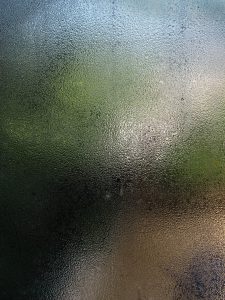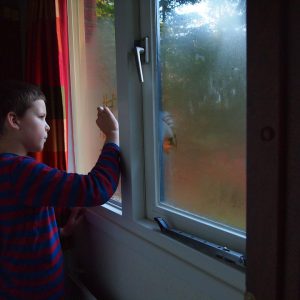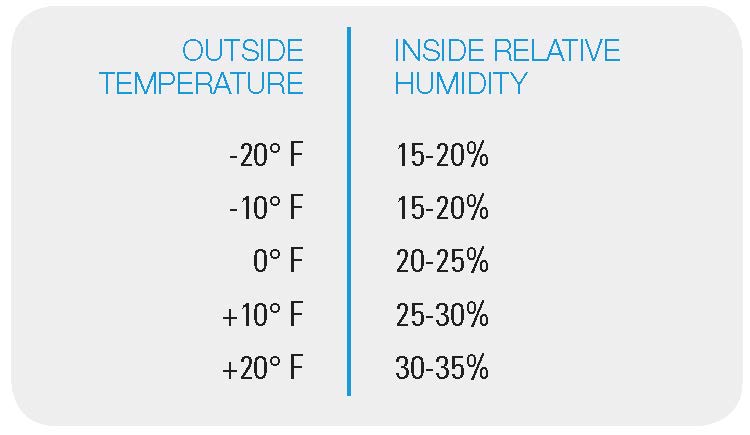How To Create Condensation On Glass
Don't let the fog set in.

Have you noticed that the windows in your home are continually fogging up? Does it seem like they are collecting moisture? This isn't necessarily your windows' fault. In fact, window condensation may be an indicator of something entirely different. Your foggy or icy windows may be an indicator that you need to reduce indoor humidity before it causes hidden, costly problems elsewhere in your home.
This article will help you understand the relationship between windows and condensation, and how to tell when persistent high humidity and condensation may be increasing your risk for home and health problems.
Do windows cause condensation?
No. Windows do not cause condensation. But, windows are often the first place where condensation can be seen. Think about it, you're probably not surprised or concerned when your bathroom mirror becomes fogged after a hot shower. Your car windows fog up in humid weather or in winter when you have several passengers. And although condensation usually occurs in cold weather, it can occur during humid months when air conditioning is running. The mirror or car windows don't cause the condensation, these are just the first places you actually see condensation.
What does cause condensation?
Condensation forms when warm, humid air contacts a cold surface. Moisture is in the air all around us and warmer air can hold more moisture. As air cools, it contracts and its moisture condenses. When the temperature drops, the first place you will see any condensation is on the windows. Your windows are the coldest surfaces indoors. During colder months, indoor air is much warmer and holds more moisture than outdoor air, which is colder and dry. Warm, humid indoor air cools and contracts; as it contacts the cooler windows, the moisture condenses on the glass.
Why is indoor air so humid?
The most common cause of indoor air humidity is everyday living. Things like showers, baths, cooking, washing dishes, doing laundry, cleaning, and even breathing all add moisture to the air in your home, as much as four gallons or more per day in some homes. Today's energy-efficient, well-insulated homes help us keep heating and cooling costs low. But the same things that block outdoor air from entering our homes also keep moisture from venting to the outdoors.
I have condensation on my double-glazed windows. Is it bad seals or indoor humidity?

Before calling for repair service, try this easy test. Run your finger through the area where the condensation is formed. If your finger gets wet and leaves a trail through the condensation, it's on the room side of the glass. That tells you that condensation is forming because of excessive indoor humidity.
TIP: If more than one window is showing
condensation, it's extremely unlikely that the
seals are bad on all of the windows. It's probably
indoor humidity.
I didn't have condensation problems with my old windows. Why now?
If your old windows were drafty, those cracks did more than just let in the wind; they allowed excess moisture to escape outdoors. Your new windows are better insulated, so indoor humidity can't escape. Windows do not cause condensation and they also can't eliminate condensation. Your windows are alerting you to excess humidity in your home.
How does humidity affect our everyday lives?
It was once believed that humidifiers used in the winter months would help people stay healthy. But studies have shown this to be untrue, particularly for healthy people. In fact, humidifiers can actually create health problems. While manufacturers maintain that humidifiers can benefit plants and furniture, the Association of Appliance Manufacturers states that no evidence exists to associate humidifier use with any medical benefits.
What kind of problems can humidity cause?
Health problems. Mold and mildew thrive in moist areas with plenty of organic material, such as wood, plaster and some types of insulation. When inhaled or ingested, molds are known to cause local or systemic allergic reactions, sinus and nasal irritations and infections, chronic respiratory problems, dizziness, lethargy, and trigger attacks in people with asthma.
Your home. Because humid indoor air tends to be under higher pressure than outdoor air, indoor air constantly pushes its way outward to the area of lower pressure right through wood, plaster, insulation, and concrete. This process can cause insulation to deteriorate, paint to blister and peel, unsightly stains on walls and ceilings, rotting of floors, wall supports and other structural supports and foundation damage.
Is condensation more likely in certain climates, types of homes or windows, or times of year?
Yes. It's more likely to occur:
• In areas where January temperatures average 35°F or less.
• In summer and fall, when homes pick up moisture from damp air.
• Condensation can also form on the outside of your windows. This reverse condensation usually happens when it is hot and humid outside. When the air is cooler inside your home, it makes the surface of the glass cooler than the dew point. Plants can increase the chance of having reverse condensation.
• With sharp, quick drops in temperature, creating temporary condensation problems.
• For one year after construction or remodeling, while building materials dry out. Building materials hold a massive amount of moisture. Condensation should be expected through the first heating season.
• On bay or bow windows, where circulation is often restricted and windows tend to be a few degrees cooler since they project out from the insulated house wall.
• When drapes are closed and shades are pulled down. Insulated drapes and tighter shades restrict air flow over window glass and can contribute to condensation problems.
How can we reduce indoor humidity?
1. Increase ventilation.
• As a temporary solution, open a window in each room for just a few minutes, letting humid air escape and fresh, dry air in. Your heat loss will be minimal.
• Vent all gas burners, clothes dryers, etc., to the outdoors.
• Install kitchen and bathroom exhaust fans to draw steam outdoors.
• Keep attic vents open and clear.
2. Control indoor moisture.
• Set your humidifier at the level recommended below for winter temperatures:

Indoor humidity can be checked with a humidity monitor or regulated with a humidistat, available at most building supply stores and home centers.
• If you're an indoor plant lover, group them in one sunny room and avoid overwatering.
• Waterproof basement floors and walls. Run a dehumidifier if needed.
• Insulate under the seat and head of bay and bow windows where condensation forms to keep window glass warmer.

What is exterior window condensation?
The moisture that appears on the exterior of window and patio door glass can block the view and be annoying for homeowners.
Why is your new window/door doing this?
It may seem natural to assume the condensation is a product defect; but while interior condensation is an indication of excess humidity in the home, exterior condensation is a natural formation of dew.
The glass is simply a surface on which moisture in the air outside can condense. Condensation typically occurs during transitions between cool nights and warmer days. Exterior condensation is a natural atmospheric phenomenon and it doesn't mean your windows are defective in any way; it occurs whenever water vapor in the air comes in contact with a surface temperature lower than the dew point. The dew point is the temperature at which air becomes 100% saturated with water and produces dew. The lower the air temperature the less water it can hold before condensing.
Examples of dew points:

On cool mornings when the night temperature dipped to 40°F, for example, the insulated glass keeps your heated air inside and does not warm the exterior glass surface – an indicator of energy efficient windows. As the sun warms the outside air to 60°F, the glass that is shaded remains cool and if the relative humidity is 75%, it will create condensation until the sun warms the glass above 52°F. So, when outdoor humidity levels are higher, this kind of condensation is more likely to form. Exterior condensation is not a sign of inefficient windows, quite the opposite actually; exterior condensation is a sign of energy efficiency, since it means the outside pane is insulated from the heated indoors of your home.
Why the 1" strip around the window glass?
Windows with a strip around the edge of the glass are just an indication of the material temperature differential. The edge of the insulated glass unit features metal components that transmit heat differently than the center of the unit will.
For more information, contact:
American Lung Association
www.lungusa.org
"Indoor Air Pollution Fact Sheet, Air Pollution in Your Home?"
U.S. Consumer Product Safety Commission
www.cpsc.gov
800-638-8270
800-492-8104 (TTY)
U.S. Environmental Protection Agency
Indoor Air Quality INFO Clearinghouse
www.epa.gov
800-438-4318
Centers for Disease Control and Prevention
"Molds in the Environment"
www.cdc.gov/mold/links.htm
University of Illinois at Urbana-Champaign College of Fine and Applied Arts School of Architecture
– Building Council Research "Moisture Condensation"
www.arch.uiuc.edu/programs/engagement/brc/publicationsforsale/brc/waterproblems/#sp01
800-336-0616
How To Create Condensation On Glass
Source: https://greatlakeswindow.com/window-condensation-causes-reduce-cold-warm-weather/
Posted by: kussreearly.blogspot.com

0 Response to "How To Create Condensation On Glass"
Post a Comment